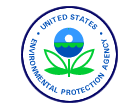
|
U.S. EPA Superfund Innovative Technology
Evaluation (SITE) Program SABRE
Process for Nitroaromatics J.R. Simplot Company
This document is available in the Adobe Acrobat PDF Format.
Click here for information
about Portable Document File (PDF) Formats.
or
Click here
to directly download the Acrobat Reader.
(To view the PDF, it is recommended that you
use the latest version of Acrobat Reader.)
U.S. EPA Superfund Innovative Technology Evaluation
(SITE) Program
SABRE Process for Nitroaromatics J.R. Simplot Company (810KB)
ABSTRACT
The J.R. Simplot Company (Simplot), Pocatello, Idaho, offers a bioremediation
alternative to cleaning soils contaminated with nitroaromatics. The Simplot
Anaerobic Biological Remediation (SABRE) Process, developed by the University
of Idaho, consists of a variety of microbial genera that become active anaerobically
at oxidation/reduction potentials of -200 mV or lower. The system is applicable
to nitroaromatic contaminants, including nitrotoluene explosives (e.g., TNT)
and many pesticides (e.g., dinoseb). Oversize material is removed from contaminated
soil, and the soil is then homogenized. The homogenized, contaminated soil is
then placed in a bioreactor with a specially prepared water solution in a 1:1
weight ratio. A pH buffer, a carbon source, and a consortium of enhanced nitroaromatic-degrading
anaerobic bacteria are introduced into the bioreactor. These bacteria can completely
degrade nitroaromatic contaminants to nonaromatic, nontoxic products. The SABRE
Process was evaluated under the SITE Program on 39 yd3 of 2-sec-butyl-4,6-dinitrophenol
(dinoseb) contaminated soil, at the county owned airport in Ellensburg, WA (Bowers
Field). The technology was demonstrated over a 23 day period during June and
July 1993. Comparison of the dinoseb levels before and after treatment showed
a reduction of greater than 99.8 percent. Other pesticides were also degraded
in the process, highlighting the effectiveness of the process even in the presence
of co-contaminants. Based upon demonstration results, treatment costs have been
estimated at $97/yd3.
Posted February 16, 2000
|

